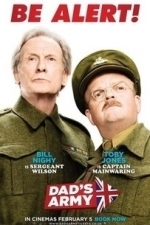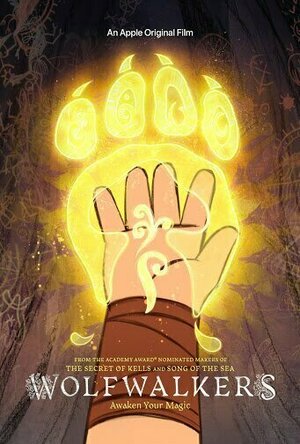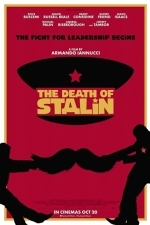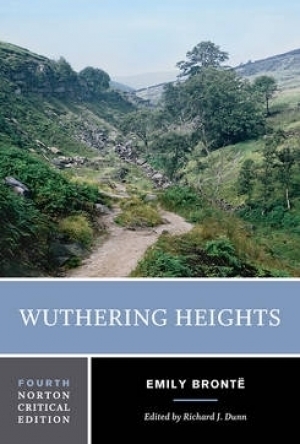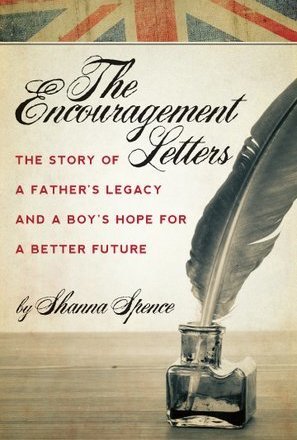Search

Sheep Farming in Barnet by Toyah
Album
Cherry Red Records is delighted announce the long-awaited newly remastered and expanded deluxe...

iURO Prostate
Medical and Education
App
iURO prostate is the must-have app for all urology healthcare professionals and students that are...
Movie Metropolis (309 KP) rated Dad's Army (2016) in Movies
Jun 11, 2019
Full of wasted British talent
I may be fairly young in years, but I grew up around comedies like Only Fools & Horses, One Foot in the Grave and of course Dad’s Army. I remember many evenings sitting at home with my dad as he cried with laughter at all three, though it was the latter’s influence that stuck with me the most.
Now, Dad’s Army like so many classic TV shows is getting the silver screen treatment, but does this modern-day reimagining, with an all-star British cast live up to the series that delighted so many for so long?
The movie adaptation of Dad’s Army follows on from the TV series, taking place just before the Second World War comes to an end. In Walmington-On-Sea, the Home Guard, led by Captain Mainwaring must track down a German spy, who is intent on swaying the war in their favour.
A whole host of British talent, young and old, star and each and every one of them slots perfectly into the well-worn shoes of classic characters. From Michael Gambon’s effervescent performance as Godfrey and Toby Jones’ faithful portrayal of Mainwaring to Inbetweeners star Blake Harrison taking on the role of Pike, it feels as though the casting team really put a lot of thought into getting the characteristics right.
It doesn’t stop there, Welsh beauty Catherine Zeta Jones, TV favourite Sarah Lancashire and Victor Meldrew’s long-suffering wife Margaret (Annette Crosbie) all make appearances for the fairer sex, with each bringing something to the table.
The scenery is beautiful, filmed just a couple of hours up the road in Bridlington, East Yorkshire, the normally vibrant seaside town is transformed into 1940s Walmington with an enviable amount of detail. Elsewhere, the White Cliffs of Dover are replicated exceptionally at Flamborough on the east coast.
Unfortunately, the story is a little on the light side, barely managing to stretch to the film’s slightly overlong running time. This is an issue that blights many TV to film projects and it feels like this unbelievably talented cast is somewhat wasted with a fairly run-of-the-mill plot.
It also feels like the comedy is on rations. Yes, it’s nostalgic with constant references to its small-screen counterpart, but it comes across like the producers were too busy trying to shoehorn as many elements of the TV series into the film, without concentrating on what Dad’s Army was all about – laughs.
Nevertheless, there is plenty to enjoy despite a lack of giggles. The acting is, as said previously, remarkable with fans of the series and newcomers alike being able to enjoy the warm, typically British feeling these thespians bring to the film.
Overall, Dad’s Army is a decent, albeit slightly underwhelming, effort in bringing one of the most popular TV shows of all time to the big screen. Its talent and casting are undeniable and the filming style is very impressive, but a lack of attention to the plot and a comedy drought stop it short of achieving what it clearly set out to do.
https://moviemetropolis.net/2016/02/07/full-of-wasted-british-talent-dads-army-review/
Now, Dad’s Army like so many classic TV shows is getting the silver screen treatment, but does this modern-day reimagining, with an all-star British cast live up to the series that delighted so many for so long?
The movie adaptation of Dad’s Army follows on from the TV series, taking place just before the Second World War comes to an end. In Walmington-On-Sea, the Home Guard, led by Captain Mainwaring must track down a German spy, who is intent on swaying the war in their favour.
A whole host of British talent, young and old, star and each and every one of them slots perfectly into the well-worn shoes of classic characters. From Michael Gambon’s effervescent performance as Godfrey and Toby Jones’ faithful portrayal of Mainwaring to Inbetweeners star Blake Harrison taking on the role of Pike, it feels as though the casting team really put a lot of thought into getting the characteristics right.
It doesn’t stop there, Welsh beauty Catherine Zeta Jones, TV favourite Sarah Lancashire and Victor Meldrew’s long-suffering wife Margaret (Annette Crosbie) all make appearances for the fairer sex, with each bringing something to the table.
The scenery is beautiful, filmed just a couple of hours up the road in Bridlington, East Yorkshire, the normally vibrant seaside town is transformed into 1940s Walmington with an enviable amount of detail. Elsewhere, the White Cliffs of Dover are replicated exceptionally at Flamborough on the east coast.
Unfortunately, the story is a little on the light side, barely managing to stretch to the film’s slightly overlong running time. This is an issue that blights many TV to film projects and it feels like this unbelievably talented cast is somewhat wasted with a fairly run-of-the-mill plot.
It also feels like the comedy is on rations. Yes, it’s nostalgic with constant references to its small-screen counterpart, but it comes across like the producers were too busy trying to shoehorn as many elements of the TV series into the film, without concentrating on what Dad’s Army was all about – laughs.
Nevertheless, there is plenty to enjoy despite a lack of giggles. The acting is, as said previously, remarkable with fans of the series and newcomers alike being able to enjoy the warm, typically British feeling these thespians bring to the film.
Overall, Dad’s Army is a decent, albeit slightly underwhelming, effort in bringing one of the most popular TV shows of all time to the big screen. Its talent and casting are undeniable and the filming style is very impressive, but a lack of attention to the plot and a comedy drought stop it short of achieving what it clearly set out to do.
https://moviemetropolis.net/2016/02/07/full-of-wasted-british-talent-dads-army-review/
Lee (2222 KP) rated Wolfwalkers (2020) in Movies
Oct 12, 2020
Wolfwalkers is the latest animated offering from Irish based studio, Cartoon Saloon. I’m actually ashamed to say that before watching Wolfwalkers, I was pretty unfamiliar with their previous Irish folklore offerings - The Secret of Kells (2009) and Song of the Sea (2014) - but having seen this latest animated feature, it’s a mistake that I will be looking to correct as quickly as possible.
Wolfwalkers is set in Kilkenny, Ireland (which is also the home of Cartoon Saloon!) during the 17th century. Robyn (Honor Kneafsey) has moved from Yorkshire with her father, Bill (Sean Bean) to the walled town, where Bill has been tasked by the rather menacing Lord Protector (Simon McBurney) to clear the surrounding forest of wolves. Once the forest is clear, the woodsmen can fell the trees and the farmers can start working the land.
There are signs everywhere, throughout the town and pinned to trees in the forest, showing a snarling wolf with a red cross drawn over it. A wolf attack on some woodsmen early on shows us just how dangerous the wolves are, and also introduces us to the Wolfwalkers that walk among them. With blazing eyes and fiery red hair, the Wolfwalkers are able to communicate with and control the wolves, calling them off their attacks on the humans. They also appear to possess magical healing abilities, using them to heal a wolf scratch on the chest of one of the men.
Robyn has dreams of following in her father’s footsteps and becoming a hunter as she practices her crossbow skills. So rather than work all day in the scullery, she decides to slip past the guards at the outer gate (no children are allowed beyond the town walls) and secretly follow her father out into the forest, watching him as he sets traps for the wolves. When she comes face to face with a wolf, it’s much smaller and a lot cuter than the ones we’ve seen before, and Robyn learns that it is, in fact, a young Wolfwalker named Mebh.
Robyn forms a bond with Mebh and discovers that when the Wolfwalkers sleep, they assume the body of a wolf, leaving their human body to sleep until they return in order to wake it up. Mebh is worried because her mother has been asleep for some time and her wolf form has not yet returned. Robyn learns that the Wolfwalkers are simply trying to defend the animals from the modern world that is encroaching on their forest and Robyn vows to help find her mother. A difficult task when the Lord Protector has given her father 2 days to clear the forest of wolves, and he isn’t listening to his daughter as she pleads with him to stop.
I found Wolfwalkers to be simply wonderful, with a captivating story full of twist and turns for both kids and adults to enjoy. It’s beautiful to look at too, utilising a watercolour style with rough pencil sketches visible in most of the characters and scenery only adding to its visual appeal. I was completely taken by surprise and just couldn’t fault it.
Wolfwalkers is set in Kilkenny, Ireland (which is also the home of Cartoon Saloon!) during the 17th century. Robyn (Honor Kneafsey) has moved from Yorkshire with her father, Bill (Sean Bean) to the walled town, where Bill has been tasked by the rather menacing Lord Protector (Simon McBurney) to clear the surrounding forest of wolves. Once the forest is clear, the woodsmen can fell the trees and the farmers can start working the land.
There are signs everywhere, throughout the town and pinned to trees in the forest, showing a snarling wolf with a red cross drawn over it. A wolf attack on some woodsmen early on shows us just how dangerous the wolves are, and also introduces us to the Wolfwalkers that walk among them. With blazing eyes and fiery red hair, the Wolfwalkers are able to communicate with and control the wolves, calling them off their attacks on the humans. They also appear to possess magical healing abilities, using them to heal a wolf scratch on the chest of one of the men.
Robyn has dreams of following in her father’s footsteps and becoming a hunter as she practices her crossbow skills. So rather than work all day in the scullery, she decides to slip past the guards at the outer gate (no children are allowed beyond the town walls) and secretly follow her father out into the forest, watching him as he sets traps for the wolves. When she comes face to face with a wolf, it’s much smaller and a lot cuter than the ones we’ve seen before, and Robyn learns that it is, in fact, a young Wolfwalker named Mebh.
Robyn forms a bond with Mebh and discovers that when the Wolfwalkers sleep, they assume the body of a wolf, leaving their human body to sleep until they return in order to wake it up. Mebh is worried because her mother has been asleep for some time and her wolf form has not yet returned. Robyn learns that the Wolfwalkers are simply trying to defend the animals from the modern world that is encroaching on their forest and Robyn vows to help find her mother. A difficult task when the Lord Protector has given her father 2 days to clear the forest of wolves, and he isn’t listening to his daughter as she pleads with him to stop.
I found Wolfwalkers to be simply wonderful, with a captivating story full of twist and turns for both kids and adults to enjoy. It’s beautiful to look at too, utilising a watercolour style with rough pencil sketches visible in most of the characters and scenery only adding to its visual appeal. I was completely taken by surprise and just couldn’t fault it.

The Art of Losing by The Anchoress
Album
AWARD-WINNING WELSH MULTI-INSTRUMENTALIST THE ANCHORESS RETURNS WITH HER CRITICALLY ACCLAIMED SECOND...
Bob Mann (459 KP) rated The Death Of Stalin (2017) in Movies
Sep 29, 2021
Death…. Torture…. Child Abuse…. LOL??
Armando Iannucci is most familiar to TV audiences on both sides of the pond for his cutting political satire of the likes of “Veep” and “The Thick of It”, with his only previous foray into directing movies being “In the Loop”: a spin-off of the latter series. Lovers of his work will know that he sails very close to the wind on many occasions, such that watching can be more of a squirm-fest than enjoyment.
Rupert Friend (centre) tries to deliver a eulogy to his father against winged opposition. With (from left to right) Michael Palin, Jeffrey Tambor, Steve Buscemi and Simon Russell Beale.
It should come as no surprise then that his new film – “The Death of Stalin” – follows that same pattern, but transposed into the anarchic and violent world of 1950’s Russia. Based on a French comic strip, the film tells the farcical goings on surrounding the last days of the great dictator in 1953. Stalin keeps distributing his “lists” of undesirables, most of who will meet unpleasant ends before the end of the night. But as Stalin suddenly shuffles off his mortal coil, the race is on among his fellow commissariat members as to who will ultimately succeed him.
Stalin…. Going… but not forgotten.
The constitution dictates that Georgy Malenkov (an excellently vacillating Jeffrey Tambor) secedes but, as a weak man, the job is clearly soon going to become vacant again and spy-chief Lavrentiy Beria (Simon Russell Beale) and Nikita Khrushchev (Steve Buscemi) are jostling for position. (No spoilers, but you’ll never guess who wins!). Colleagues including Molotov (Michael Palin) and Mikoyan (Paul Whitehouse) need to decide who to side with as the machinations around Stalin’s funeral become more and more desperate.
The film starts extremely strongly with the ever-excellent Paddy Considine (“Pride”) playing a Radio Russia producer tasked with recording a classical concert, featuring piano virtuoso Maria Yudina (Olga Kurylenko, “Quantum of Solace”). A definition of paranoia in action!
Great fingering. Olga Kurylenko as Yudina, with more than a hand in the way the evening’s events will unfold.
We then descend into the chaos of Stalin’s Russia, with mass torture and execution colouring the comedy from dark-grey to charcoal-black in turns. There is definitely comedy gold in there: Khrushchev’s translation of his drunken scribblings from the night before (of things that Stalin found funny and – more importantly – things he didn’t) being a high point for me. Stalin’s children Svetlana (Andrea Riseborough, “Nocturnal Animals”) and Vasily (Rupert Friend, “Homeland”) add knockabout humour to offset the darker elements, and army chief Georgy Zhukov (Jason Isaacs, “Harry Potter”) is a riot with a no-nonsense North-of-England accent.
Brass Eye: Jason Isaacs as the army chief from somewhere just north of Wigan.
Production values are universally excellent, with great locations, great sets and a screen populated with enough extras to make the crowd scenes all appear realistic.
Another broad Yorkshire accent: (the almost unknown) Adrian McLoughlin delivers an hysterical speaking voice as Stalin.
The film absolutely held my interest and was thorougly entertaining, but the comedy is just so dark in places it leaves you on edge throughout. The writing is also patchy at times, with some of the lines falling to the ground as heavily as the dispatched Gulag residents.
It’s not going to be for everyone, with significant violence and gruesome scenes, but go along with the black comic theme and this is a film that delivers rewards.
Rupert Friend (centre) tries to deliver a eulogy to his father against winged opposition. With (from left to right) Michael Palin, Jeffrey Tambor, Steve Buscemi and Simon Russell Beale.
It should come as no surprise then that his new film – “The Death of Stalin” – follows that same pattern, but transposed into the anarchic and violent world of 1950’s Russia. Based on a French comic strip, the film tells the farcical goings on surrounding the last days of the great dictator in 1953. Stalin keeps distributing his “lists” of undesirables, most of who will meet unpleasant ends before the end of the night. But as Stalin suddenly shuffles off his mortal coil, the race is on among his fellow commissariat members as to who will ultimately succeed him.
Stalin…. Going… but not forgotten.
The constitution dictates that Georgy Malenkov (an excellently vacillating Jeffrey Tambor) secedes but, as a weak man, the job is clearly soon going to become vacant again and spy-chief Lavrentiy Beria (Simon Russell Beale) and Nikita Khrushchev (Steve Buscemi) are jostling for position. (No spoilers, but you’ll never guess who wins!). Colleagues including Molotov (Michael Palin) and Mikoyan (Paul Whitehouse) need to decide who to side with as the machinations around Stalin’s funeral become more and more desperate.
The film starts extremely strongly with the ever-excellent Paddy Considine (“Pride”) playing a Radio Russia producer tasked with recording a classical concert, featuring piano virtuoso Maria Yudina (Olga Kurylenko, “Quantum of Solace”). A definition of paranoia in action!
Great fingering. Olga Kurylenko as Yudina, with more than a hand in the way the evening’s events will unfold.
We then descend into the chaos of Stalin’s Russia, with mass torture and execution colouring the comedy from dark-grey to charcoal-black in turns. There is definitely comedy gold in there: Khrushchev’s translation of his drunken scribblings from the night before (of things that Stalin found funny and – more importantly – things he didn’t) being a high point for me. Stalin’s children Svetlana (Andrea Riseborough, “Nocturnal Animals”) and Vasily (Rupert Friend, “Homeland”) add knockabout humour to offset the darker elements, and army chief Georgy Zhukov (Jason Isaacs, “Harry Potter”) is a riot with a no-nonsense North-of-England accent.
Brass Eye: Jason Isaacs as the army chief from somewhere just north of Wigan.
Production values are universally excellent, with great locations, great sets and a screen populated with enough extras to make the crowd scenes all appear realistic.
Another broad Yorkshire accent: (the almost unknown) Adrian McLoughlin delivers an hysterical speaking voice as Stalin.
The film absolutely held my interest and was thorougly entertaining, but the comedy is just so dark in places it leaves you on edge throughout. The writing is also patchy at times, with some of the lines falling to the ground as heavily as the dispatched Gulag residents.
It’s not going to be for everyone, with significant violence and gruesome scenes, but go along with the black comic theme and this is a film that delivers rewards.

iFootpath - Digital Walking Guides
Travel and Navigation
App
Modern Walking Guides in the Palm of Your Hand "Great app - been looking for a good walking route...
A Bibliophagist (113 KP) rated Wuthering Heights in Books
Feb 12, 2020
Stands up (2 more)
Enthralling
Unique
Dislikable characters (1 more)
Difficult accents without translations
I will do my best to review this, however, I didn't heed the intro, this tour de force really does leave you as quickly as it comes, and reading another book before reviewing this one was a mistake.
In reading reviews prior to reading this book, I learned three major things; 1, people either love or hate this book, 2. I had no idea what I was actually in for, and 3. this may have not been the romantic pick for February I was expecting it to be.
So yes, PSA for anyone out there considering going into this thinking it's a romance. It is NOT. There are love stories in this, absolutely, powerful love stories that made me read quotes to my boyfriend with snarky statements like "if you don't say this at my funeral, did you ever really love me?". But it is NOT a romance. If anything this has more in common with "The Count of Monte Cristo" than it does "Pride and Prejudice". Honestly, the only thing it has in common with other, romantic books of this time, is the time period. But beware, no balls and high society and Mr. Darcy's await you in this novel. I feel a number of the reviews decrying the book, calling the characters "monstrous" both were the orchestrators of their own disappointment by assuming it to be like an Austin, and really need to look in the mirror and reflect on if they are really as perfect as they think they are. Especially if they were in the circumstances that surround this tale.
I find that Heathcliff himself addresses this mistake many readers had going into this book.
"picturing in me a hero of romance, and expecting unlimited indulgences from my chivalrous devotion. I can hardly regard her in the light of a rational creature, so obstinately has she persisted in forming a fabulous notion of my character and actin gon false impressions she cherished."
SO many readers went into this expecting Heathcliff to be some misunderstood brute or one harsh but salvaged by the purity of his love of Catherine. But this isn't the case.
Wuthering Heights tells the story of (I guess technically 3) but really 2 generations of families. Living in the Yorkshire Moors, isolated from high society. We have the Liptons, primmer and properer and more in touch with society, and the Earnshaws which become a little rough around the edges in their isolation and loss. Papa Earnshaw has two children, Catherine and Hindley, and adopts a small boy of unknown heritage but is implied to be Romani or of mixed race (sorry Tom Hardy and nearly every portrayal of Heathcliff), that he names, simply, Heathcliff. He loves Heathcliff, and dotes on him greatly, much to the chagrin of Hindly who grows to resent Heathcliff, treating him terribly until Hindly leaves for school. Catherine and Heathcliff become great playmates, their care is given primarily to a maid scarcely older than them, as Papa Earnshaw is a single daddy. They are wild things, as children I would assume would be, in such isolation as the Yorkshire Moors in a time before the creature comforts and entertainment we have. They grow very close, obsessively close. Upon Papa Earnshaw's death, Hindley returns (at around the age of 23) to run the household, and take over the care of these two youngsters, one of which, he hates. So, Cinderella-style, Heathcliff gets treated worse and worse and treated like a servant rather than the adoptive child that Papa Earnshaw loved so dearly. Suddenly Heathcliff is nothing, treated terribly, and has the most important thing in his life banned from him, Catherine. Meanwhile, the Liptons also have two children, not wild, but spoilt in their own ways, Edgar and Isabella, close in age to Heathcliff and Catherine. When H and C run off on a camping adventure and find themselves at the Lipton's house, Catherine is injured and stays with the Liptons, in their higher society for 5 weeks. Leaving Heathcliff to the abuse of her brother and further isolation. She returns much more a lady and with her connection to Heathcliff slightly burned. In an attempt to protect Heathcliff, and because Heathcliff is now no more than a servant and not an option to marry, Catherine intends to marry Edgar. Causing our resident bad boy to run off for a number of years. Only to return a proper, but still broody gentleman, and confuse Catherine's affection much to the displeasure of Edgar.
Now, this is where a number of shows and movies end things. With a focus on Catherine and Heathcliff's whirlwind romance, obsession. It has some of the most to the point and beautiful lines regarding love, not all flowery, not "I love you most ardently" but rather cries of "I am Heathcliff" by Catherine. Absolutely heart-rending, even though I didn't like Catherine. But this is not where the book ends. The book goes on to follow Heathcliff's obsession with revenge, with his treatment as a child, his rage against Hindley, and against losing Catherine to Edgar. He spends years slowly ruining everyone's lives. Not that you could really ruin Hindley's life, he was a mean drunk. But he even goes as far as to meddle with the next generation, Hindley's son Hareton is raised terribly and is a bit of a wild thing (those his redemption and love story is quite beautiful), Catherine's daughter Cathy and Heathcliff's son Lipton are whisked up into a big scheme by Heathcliff to take everything. Heathcliff even marry's out of pure spite.
Love does not redeem this man, he's barely an antihero without his youth story. He is angry and passionate and obsessed. Which for the first half of the book I didn't fault him for, but he does do some damnable things in the second half that you cannot argue away. No matter how romantic and beautiful and heartrending his lamentations can be. I was quite the character arc, quite the tale of revenge and loss. He was unredeemable because of his big sprawling schemes and harsh intentions. Catherine for me was unredeemable because she was an obnoxious, selfish thing, that honestly if Heathcliff had stopped thinking about two minutes would have found a better woman in every town. She whined and treated Edgar (who was honestly super sweet) so terribly, she had an anger problem and would work herself up until she was sick. But it is in this imperfection that I fell in love more with the book. Here is something unique and real, this is no Elizabeth Bennett. The isolation and hermetic lifestyle created very different characters than what we see in Jane Austin or even in Emily's sister's novel.
It's no wonder this book was harshly critiqued upon release, here is a woman, writing a revenge story, with love stories in it. That based on the biographical intro had some parallels to her own life. She lived an isolated existence, surrounded by the death of the majority of her family young. She was in her late 20s when she wrote this and died a year after publication. She made humans of monsters and monsters of humans and wrote something unexpected and truly unique.
It's hard for me to explain, amongst the harshness and bleakness of this novel, why I loved it so much. But I did, I loved every bit. The anger, the passion, the love, the scheming, I loved it all.
I also feel it's important to note that this whole story is told by a maid to a new tenant. So the narrator is unreliable. Were these people truly this way? Or is it clouded by this maid's opinions of them? How much is omitted due to the maid not being privy to an event?
Truly a fantastic read, that punched me in my chest and gut, grabbed and twisted my insides and refuses to let go. I would argue it's a cult classic rather than a classic. So please, shed all preconceived notions of what this book is, shake that Austin out of your mind and read this tale of obsession and revenge. It's well worth it.
In reading reviews prior to reading this book, I learned three major things; 1, people either love or hate this book, 2. I had no idea what I was actually in for, and 3. this may have not been the romantic pick for February I was expecting it to be.
So yes, PSA for anyone out there considering going into this thinking it's a romance. It is NOT. There are love stories in this, absolutely, powerful love stories that made me read quotes to my boyfriend with snarky statements like "if you don't say this at my funeral, did you ever really love me?". But it is NOT a romance. If anything this has more in common with "The Count of Monte Cristo" than it does "Pride and Prejudice". Honestly, the only thing it has in common with other, romantic books of this time, is the time period. But beware, no balls and high society and Mr. Darcy's await you in this novel. I feel a number of the reviews decrying the book, calling the characters "monstrous" both were the orchestrators of their own disappointment by assuming it to be like an Austin, and really need to look in the mirror and reflect on if they are really as perfect as they think they are. Especially if they were in the circumstances that surround this tale.
I find that Heathcliff himself addresses this mistake many readers had going into this book.
"picturing in me a hero of romance, and expecting unlimited indulgences from my chivalrous devotion. I can hardly regard her in the light of a rational creature, so obstinately has she persisted in forming a fabulous notion of my character and actin gon false impressions she cherished."
SO many readers went into this expecting Heathcliff to be some misunderstood brute or one harsh but salvaged by the purity of his love of Catherine. But this isn't the case.
Wuthering Heights tells the story of (I guess technically 3) but really 2 generations of families. Living in the Yorkshire Moors, isolated from high society. We have the Liptons, primmer and properer and more in touch with society, and the Earnshaws which become a little rough around the edges in their isolation and loss. Papa Earnshaw has two children, Catherine and Hindley, and adopts a small boy of unknown heritage but is implied to be Romani or of mixed race (sorry Tom Hardy and nearly every portrayal of Heathcliff), that he names, simply, Heathcliff. He loves Heathcliff, and dotes on him greatly, much to the chagrin of Hindly who grows to resent Heathcliff, treating him terribly until Hindly leaves for school. Catherine and Heathcliff become great playmates, their care is given primarily to a maid scarcely older than them, as Papa Earnshaw is a single daddy. They are wild things, as children I would assume would be, in such isolation as the Yorkshire Moors in a time before the creature comforts and entertainment we have. They grow very close, obsessively close. Upon Papa Earnshaw's death, Hindley returns (at around the age of 23) to run the household, and take over the care of these two youngsters, one of which, he hates. So, Cinderella-style, Heathcliff gets treated worse and worse and treated like a servant rather than the adoptive child that Papa Earnshaw loved so dearly. Suddenly Heathcliff is nothing, treated terribly, and has the most important thing in his life banned from him, Catherine. Meanwhile, the Liptons also have two children, not wild, but spoilt in their own ways, Edgar and Isabella, close in age to Heathcliff and Catherine. When H and C run off on a camping adventure and find themselves at the Lipton's house, Catherine is injured and stays with the Liptons, in their higher society for 5 weeks. Leaving Heathcliff to the abuse of her brother and further isolation. She returns much more a lady and with her connection to Heathcliff slightly burned. In an attempt to protect Heathcliff, and because Heathcliff is now no more than a servant and not an option to marry, Catherine intends to marry Edgar. Causing our resident bad boy to run off for a number of years. Only to return a proper, but still broody gentleman, and confuse Catherine's affection much to the displeasure of Edgar.
Now, this is where a number of shows and movies end things. With a focus on Catherine and Heathcliff's whirlwind romance, obsession. It has some of the most to the point and beautiful lines regarding love, not all flowery, not "I love you most ardently" but rather cries of "I am Heathcliff" by Catherine. Absolutely heart-rending, even though I didn't like Catherine. But this is not where the book ends. The book goes on to follow Heathcliff's obsession with revenge, with his treatment as a child, his rage against Hindley, and against losing Catherine to Edgar. He spends years slowly ruining everyone's lives. Not that you could really ruin Hindley's life, he was a mean drunk. But he even goes as far as to meddle with the next generation, Hindley's son Hareton is raised terribly and is a bit of a wild thing (those his redemption and love story is quite beautiful), Catherine's daughter Cathy and Heathcliff's son Lipton are whisked up into a big scheme by Heathcliff to take everything. Heathcliff even marry's out of pure spite.
Love does not redeem this man, he's barely an antihero without his youth story. He is angry and passionate and obsessed. Which for the first half of the book I didn't fault him for, but he does do some damnable things in the second half that you cannot argue away. No matter how romantic and beautiful and heartrending his lamentations can be. I was quite the character arc, quite the tale of revenge and loss. He was unredeemable because of his big sprawling schemes and harsh intentions. Catherine for me was unredeemable because she was an obnoxious, selfish thing, that honestly if Heathcliff had stopped thinking about two minutes would have found a better woman in every town. She whined and treated Edgar (who was honestly super sweet) so terribly, she had an anger problem and would work herself up until she was sick. But it is in this imperfection that I fell in love more with the book. Here is something unique and real, this is no Elizabeth Bennett. The isolation and hermetic lifestyle created very different characters than what we see in Jane Austin or even in Emily's sister's novel.
It's no wonder this book was harshly critiqued upon release, here is a woman, writing a revenge story, with love stories in it. That based on the biographical intro had some parallels to her own life. She lived an isolated existence, surrounded by the death of the majority of her family young. She was in her late 20s when she wrote this and died a year after publication. She made humans of monsters and monsters of humans and wrote something unexpected and truly unique.
It's hard for me to explain, amongst the harshness and bleakness of this novel, why I loved it so much. But I did, I loved every bit. The anger, the passion, the love, the scheming, I loved it all.
I also feel it's important to note that this whole story is told by a maid to a new tenant. So the narrator is unreliable. Were these people truly this way? Or is it clouded by this maid's opinions of them? How much is omitted due to the maid not being privy to an event?
Truly a fantastic read, that punched me in my chest and gut, grabbed and twisted my insides and refuses to let go. I would argue it's a cult classic rather than a classic. So please, shed all preconceived notions of what this book is, shake that Austin out of your mind and read this tale of obsession and revenge. It's well worth it.
Bob Mann (459 KP) rated Saint Maud (2020) in Movies
Oct 6, 2020
Morfydd Clark - astonishingly good as Maud (1 more)
Expert pacing from debut director Rose Glass
"My Little Saviour": Astonishing Saint Maud delivers psycho-religious chills
Saint Maud is the debut feature from writer/director Rose Glass, and it packs a punch. The film was first seen at last year's London Film Festival, but was due for broader nationwide release soon. What a crushing disappointment it must be for Ms Glass that so few people will likely get to see it in the current climate... at least, not for a while. Since it is an effective little chiller.
Maud (Morfydd Clark) is a palliative nurse looking after ex-choreographer Amanda (Jennifer Ehle). Maud is extremely religious and feels God move in her... regularly. Acting on His guidance, Maud sets out to save the soul of her ailing bohemian charge. But is Amanda beyond reach, and how will the zealot-like Maud react to that rejection?
Morfydd Clark appears so young in this film that you would think this was her debut film. But she's actually 30 years old and has quite an impressive filmography already. Although this is her movie-lead debut, she's had a substantial part alongside Kate Beckinsale in the excellent "Love and Friendship" and smaller parts in "Crawl", "The Personal History of David Copperfield" and the fun "Pride and Prejudice and Zombies". She's likely to get more worldwide exposure soon as a young Galadriel in Amazon's new version of "Lord of the Rings".
As Maud she is simply superb - expressing such a range of joy, hurt and despair that you must think a BAFTA Rising Star nomination should be on the cards.
Clark is ably supported in the leading role by the splendid Jennifer Ehle, still so memorable to me as Elizabeth Bennett from the BBC's "Pride and Prejudice".
Scarborough is also a star of "Saint Maud". The Yorkshire seaside town is another star of the movie. Clearly filmed before lockdown, the rainy and windswept resort looks bleak and unwelcoming. And that's before Covid! Many of those struggling bars and amusement centres, as in other resorts all around the UK, are now on their last legs.
Adam Janota Bzowski supplies the impressively claustrophobic music, which deserves recognition. A scene with Maud, flicking a lighter rhythmically in time with the sonorous beat, is a masterpiece in musical choreography and editing (by Mark Towns).
At the heart of this horror-thriller is whether, following a Dawkins-style argument, fervent religious followers are less insightfully correct and more mentally unstable and misguided. When is the voice of God just the voice in your head? And how would you tell the difference anyway? Piecing together the plot and motivations of Maud was intellectually challenging and rewarding.
I always get a little tense and nervous when I see the word "horror" on a movie bill. I am NOT a great horror fan! But for me, as a 'horror movie', "Saint Maud" is of the 'horror-lite' variety. Highly watchable, it builds more in the way of creeping dread than cheap shocks. There were only a couple of jump-scares (but for me, the one in the finale was a doozy!).
A BBC interview with Rose Glass I just saw says she relates Maud's relationship with God as like many people's relationship with social media. Always looking for support, guidance and affirmation. Interesting.
This is also an obviously female-led picture. All the men are complete tools. no, really, literally they are. It makes me feel ashamed to be among their number.
Overall, "Saint Maud" is a minor classic. I didn't go in with great expectations of this one, but I was pleasantly surprised. As a small British movie, it packs a punch significantly above its weight. When I came out I was at about a 7* rating. But this is one that really stayed with me, and I've subconsciously thought about little else all day. So for that reason I am going to escalate my rating to something more appropriate.
You might struggle now to see it on the big screen, but if you can do so, it comes with a recommendation from me. I think this one could REALLY be a "Marmite film".... so if you see it, let me know what you thought with a comment on One Mann's Movies here https://rb.gy/9k93ck . (Thanks).
Maud (Morfydd Clark) is a palliative nurse looking after ex-choreographer Amanda (Jennifer Ehle). Maud is extremely religious and feels God move in her... regularly. Acting on His guidance, Maud sets out to save the soul of her ailing bohemian charge. But is Amanda beyond reach, and how will the zealot-like Maud react to that rejection?
Morfydd Clark appears so young in this film that you would think this was her debut film. But she's actually 30 years old and has quite an impressive filmography already. Although this is her movie-lead debut, she's had a substantial part alongside Kate Beckinsale in the excellent "Love and Friendship" and smaller parts in "Crawl", "The Personal History of David Copperfield" and the fun "Pride and Prejudice and Zombies". She's likely to get more worldwide exposure soon as a young Galadriel in Amazon's new version of "Lord of the Rings".
As Maud she is simply superb - expressing such a range of joy, hurt and despair that you must think a BAFTA Rising Star nomination should be on the cards.
Clark is ably supported in the leading role by the splendid Jennifer Ehle, still so memorable to me as Elizabeth Bennett from the BBC's "Pride and Prejudice".
Scarborough is also a star of "Saint Maud". The Yorkshire seaside town is another star of the movie. Clearly filmed before lockdown, the rainy and windswept resort looks bleak and unwelcoming. And that's before Covid! Many of those struggling bars and amusement centres, as in other resorts all around the UK, are now on their last legs.
Adam Janota Bzowski supplies the impressively claustrophobic music, which deserves recognition. A scene with Maud, flicking a lighter rhythmically in time with the sonorous beat, is a masterpiece in musical choreography and editing (by Mark Towns).
At the heart of this horror-thriller is whether, following a Dawkins-style argument, fervent religious followers are less insightfully correct and more mentally unstable and misguided. When is the voice of God just the voice in your head? And how would you tell the difference anyway? Piecing together the plot and motivations of Maud was intellectually challenging and rewarding.
I always get a little tense and nervous when I see the word "horror" on a movie bill. I am NOT a great horror fan! But for me, as a 'horror movie', "Saint Maud" is of the 'horror-lite' variety. Highly watchable, it builds more in the way of creeping dread than cheap shocks. There were only a couple of jump-scares (but for me, the one in the finale was a doozy!).
A BBC interview with Rose Glass I just saw says she relates Maud's relationship with God as like many people's relationship with social media. Always looking for support, guidance and affirmation. Interesting.
This is also an obviously female-led picture. All the men are complete tools. no, really, literally they are. It makes me feel ashamed to be among their number.
Overall, "Saint Maud" is a minor classic. I didn't go in with great expectations of this one, but I was pleasantly surprised. As a small British movie, it packs a punch significantly above its weight. When I came out I was at about a 7* rating. But this is one that really stayed with me, and I've subconsciously thought about little else all day. So for that reason I am going to escalate my rating to something more appropriate.
You might struggle now to see it on the big screen, but if you can do so, it comes with a recommendation from me. I think this one could REALLY be a "Marmite film".... so if you see it, let me know what you thought with a comment on One Mann's Movies here https://rb.gy/9k93ck . (Thanks).
Heather Cranmer (2721 KP) rated The Encouragement Letters in Books
Oct 3, 2018
The plot (2 more)
The characters
The educational lesson
An Uplifting Read
When I read the synopsis for The Encouragement Letters by Shanna Spence, I was intrigued. The cover also drew my attention. I lived in England for over 6 years which is another reason I wanted to read this book. I love all things England! When I got the opportunity to review it, I jumped at the chance!
I found the pacing to be perfect in The Encouragement Letters. This is a middle grade read, and Miss Spence sets the pacing perfectly for that age group. Never once did I feel like the book was too fast or too slow for young readers. I also feel the length of the book was perfect for the age group it targets.
I enjoyed the plot of The Encouragement Letters very much. It was interesting to read about Will's struggles and how he was overcoming them. I loved reading about how kind everyone was to each other. It was as if everyone was one big family. Everyone would help each other out, and that was very encouraging. It was interesting and uplifting to read about Will overcoming his challenges and not becoming a victim of circumstance even when that would have been the easiest thing to do. Reading about how Will was trying to lift everyone up in hard times with his encouragement letters truly was heartwarming. There are no plot twists in this book, but it doesn't need plot twists as it's not that kind of book. All of my questions were answered in the book. There are no cliff hangers whatsoever which was great.
The world building was done very well. Although written in third person, The Encouragement Letters is told through the eyes of 11 year old Will. I feel that Shanna Spence did a fantastic job making it seem as if a real 11 year old is telling the story. Miss Spence also does a great job making you feel as if you are involved with everything going on. Her use of language is profound. A few of the characters' accents were written exactly as they speak. I loved this! This made it that much more realistic. I also loved the Yorkshire dialect guide at the beginning of the book. Shanna Spence does a great job educating and making her readers feel like they are experiencing the Industrial Revolution in England first hand.
I loved every character in The Encouragement Letters. They all felt very real and fleshed out. Will was such a sweet boy as I mentioned earlier. I admired his work ethic and how empathetic he was even at such a young age. I loved all the shop workers and how caring they were towards Will always giving him extra food, scraps of leather, or whatever they had left over. Mary Beth was a character who also stood out to me. I enjoyed when she was mentioned. Maybe it's because I felt like I could relate to her. Like all of the characters in The Encouragement Letters, she had a strong work ethic and was so kind to Will. I thought it was cute how Will seemed to have a bit of a crush on her.
As this is a middle grade read, there aren't many trigger warnings. There is talk of death (Will's father had passed away a year prior when the novel starts) as well as sickness (Will's mother is sick throughout the book, and Will looks after her. There's one scene of violence (Will gets punched in the face), but it is not very graphic and is described in an age appropriate manner.
Overall, The Encouragement Letters is a very inspiring and uplifting novel. The characters are all so kind and have great work ethics, and the book is somewhat educational with describing how life was like during the Industrial Revolution in England. I would definitely recommend The Encouragement Letters by Shanna Spence to those 9+ who need some encouragement or who just love reading uplifting novels. Actually, I'd just recommend this to every and all people who are 9 years and older! This book gets a solid 5 out of 5 stars from me!
(Thank you to the author for providing me with a paperback of this title for a review on a blog tour I am doing in exchange for an honest and unbiased review.)
I found the pacing to be perfect in The Encouragement Letters. This is a middle grade read, and Miss Spence sets the pacing perfectly for that age group. Never once did I feel like the book was too fast or too slow for young readers. I also feel the length of the book was perfect for the age group it targets.
I enjoyed the plot of The Encouragement Letters very much. It was interesting to read about Will's struggles and how he was overcoming them. I loved reading about how kind everyone was to each other. It was as if everyone was one big family. Everyone would help each other out, and that was very encouraging. It was interesting and uplifting to read about Will overcoming his challenges and not becoming a victim of circumstance even when that would have been the easiest thing to do. Reading about how Will was trying to lift everyone up in hard times with his encouragement letters truly was heartwarming. There are no plot twists in this book, but it doesn't need plot twists as it's not that kind of book. All of my questions were answered in the book. There are no cliff hangers whatsoever which was great.
The world building was done very well. Although written in third person, The Encouragement Letters is told through the eyes of 11 year old Will. I feel that Shanna Spence did a fantastic job making it seem as if a real 11 year old is telling the story. Miss Spence also does a great job making you feel as if you are involved with everything going on. Her use of language is profound. A few of the characters' accents were written exactly as they speak. I loved this! This made it that much more realistic. I also loved the Yorkshire dialect guide at the beginning of the book. Shanna Spence does a great job educating and making her readers feel like they are experiencing the Industrial Revolution in England first hand.
I loved every character in The Encouragement Letters. They all felt very real and fleshed out. Will was such a sweet boy as I mentioned earlier. I admired his work ethic and how empathetic he was even at such a young age. I loved all the shop workers and how caring they were towards Will always giving him extra food, scraps of leather, or whatever they had left over. Mary Beth was a character who also stood out to me. I enjoyed when she was mentioned. Maybe it's because I felt like I could relate to her. Like all of the characters in The Encouragement Letters, she had a strong work ethic and was so kind to Will. I thought it was cute how Will seemed to have a bit of a crush on her.
As this is a middle grade read, there aren't many trigger warnings. There is talk of death (Will's father had passed away a year prior when the novel starts) as well as sickness (Will's mother is sick throughout the book, and Will looks after her. There's one scene of violence (Will gets punched in the face), but it is not very graphic and is described in an age appropriate manner.
Overall, The Encouragement Letters is a very inspiring and uplifting novel. The characters are all so kind and have great work ethics, and the book is somewhat educational with describing how life was like during the Industrial Revolution in England. I would definitely recommend The Encouragement Letters by Shanna Spence to those 9+ who need some encouragement or who just love reading uplifting novels. Actually, I'd just recommend this to every and all people who are 9 years and older! This book gets a solid 5 out of 5 stars from me!
(Thank you to the author for providing me with a paperback of this title for a review on a blog tour I am doing in exchange for an honest and unbiased review.)
